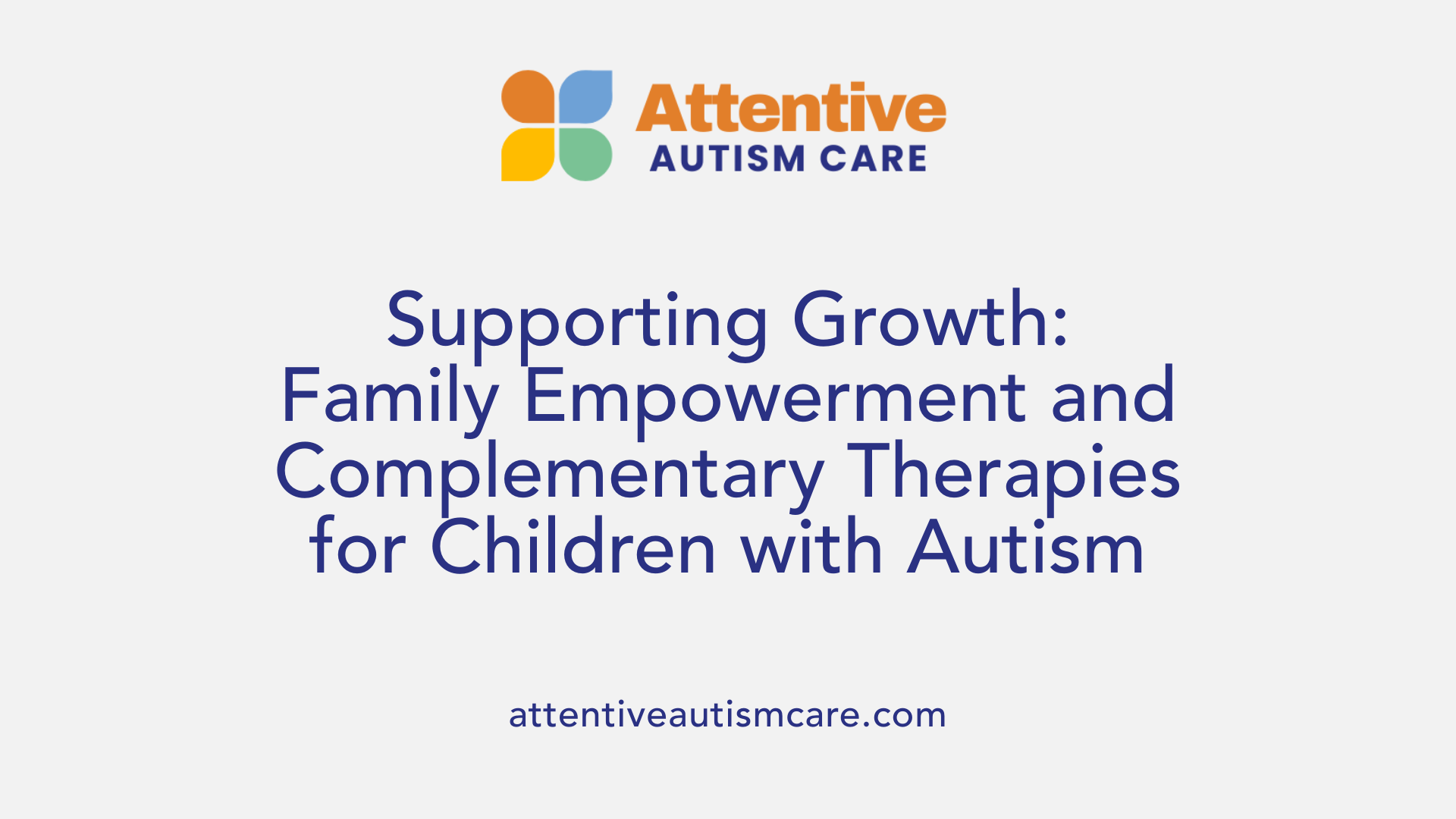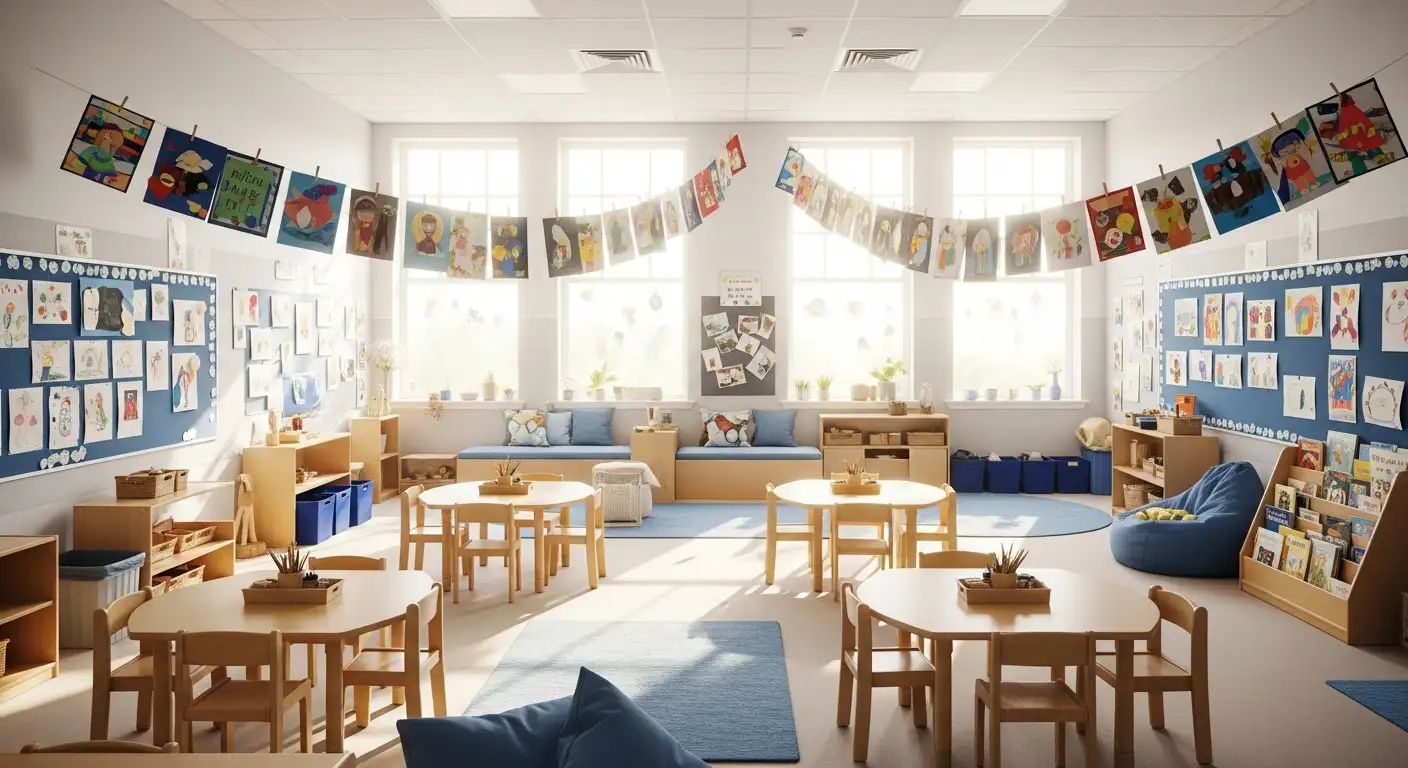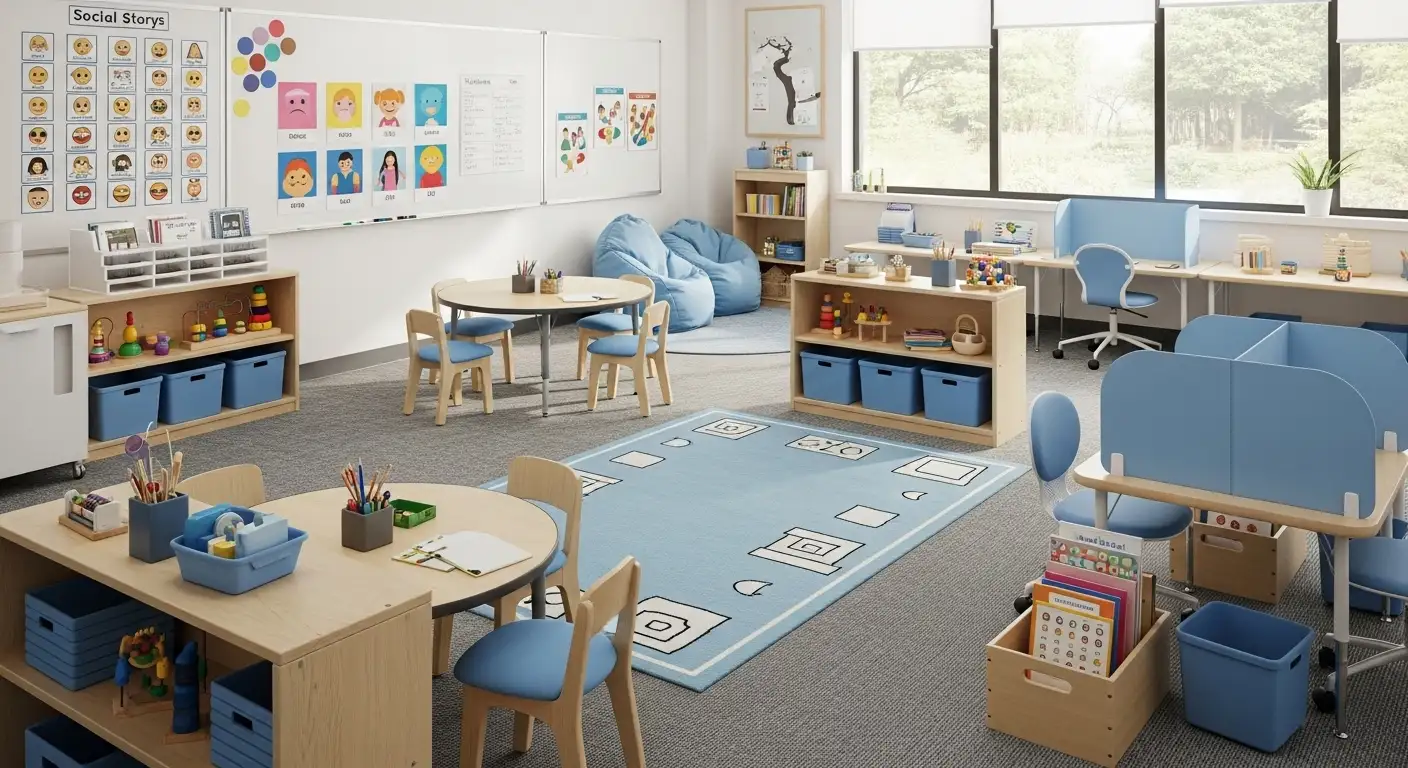How to Help Autistic Children Cope with Changes
Supporting Autistic Children's Resilience Through Change

Understanding the Impact of Change on Autistic Children
Navigating changes can be particularly challenging for children on the autism spectrum, often triggering anxiety and behavioral responses. Understanding the reasons behind this sensitivity and applying evidence-based strategies can significantly ease transitions and improve overall well-being. This article explores effective ways to support autistic children in coping with change, including therapy options, communication techniques, and family empowerment.
What Is Applied Behavior Analysis (ABA) and Its Role in Supporting Autistic Children?
What is Applied Behavior Analysis (ABA) therapy and how is it used to support individuals with autism?
Applied Behavior Analysis (ABA) therapy is a scientifically-supported behavioral intervention grounded in principles of learning and operant conditioning. It is designed to improve social, communication, and adaptive skills in children with autism by assessing individual needs and creating personalized treatment plans. ABA focuses on encouraging meaningful behavior change through techniques like Discrete Trial Training (DTT) and more natural play-based approaches such as Pivotal Response Treatment (PRT).
How does ABA support autism interventions?
ABA supports autism interventions by teaching functional skills and reducing challenging behaviors. It uses positive and negative reinforcement to encourage desired behaviors and may involve modeling, prompting, and fading techniques to promote independence. The therapy emphasizes improving social communication, enhancing good behavior, and building language skills to improve a child's daily functioning and quality of life.
What techniques are used in ABA?
Some common ABA techniques include:
- Positive reinforcement: Rewarding desired behaviors to increase their frequency.
- Negative reinforcement: Removing unpleasant stimuli to encourage behavior.
- Visual modeling: Using charts, videos, and pictures to demonstrate behaviors.
- Prompting and fading: Giving cues to initiate behavior, then gradually removing them.
- Behavior chaining: Breaking complex tasks into smaller, teachable steps.
- Behavior contracts: Agreements outlining expected behaviors and rewards.
- Extinction: Withholding reinforcement to reduce unwanted behaviors.
What is the timing and intensity of ABA intervention?
Early intervention with ABA is critical, ideally beginning before age four and delivered intensively, often exceeding 20 hours per week. Early and consistent ABA therapy is linked to significant developmental improvements, particularly in language and social-communication skills, which helps reduce the need for specialized services later.
What are the benefits of ABA for autistic children?
ABA enables children to develop vital social and communication skills, manage behavior effectively, and gain greater independence. It empowers families by teaching them behavior change strategies they can apply continuously. The therapy’s evidence-based approach makes it a leading treatment in supporting the progress and integration of children on the autism spectrum.
Qualified Professionals Delivering ABA Therapy

Who Provides ABA Therapy and What Qualifications Do Professionals Typically Have?
ABA therapy is delivered by a range of trained professionals, primarily including Board Certified Behavior Analysts (BCBAs), Registered Behavior Technicians (RBTs), and clinical supervisors.
Types of ABA Providers
- Board Certified Behavior Analysts (BCBAs): Lead and design individualized treatment plans.
- Registered Behavior Technicians (RBTs): Provide direct, hands-on therapy under supervision.
- Clinical Supervisors: Oversee therapy programs, mentor staff, and ensure treatment quality.
Qualifications and Certifications Required
Professionals generally hold at least a master's degree in applied behavior analysis, psychology, education, or a related field. They must complete 1,500 to 2,000 hours of supervised fieldwork before certification. The Behavior Analyst Certification Board (BACB) grants credentials like the BCBA, which require passing rigorous exams and maintaining certification through continuing education.
Professional Roles and Training
Many ABA specialists also assume roles such as training coordinators, university instructors, or clinical directors. These positions often require advanced qualifications and leadership skills beyond clinical expertise.
Importance of Experience and Ongoing Education
Experience ensures therapists can tailor interventions to individual needs effectively. Ongoing education keeps professionals updated on evolving research and best practices, critical for delivering evidence-based behavioral interventions.
By combining academic training, supervised clinical experience, and certification, ABA professionals are well-equipped to support children with autism and other developmental needs with scientifically validated treatments.
How ABA Therapy Benefits Autistic Children in Managing Change and Improving Skills

How does ABA therapy typically benefit individuals with autism?
ABA therapy uses scientifically validated techniques to promote meaningful behavior change in children with autism. It teaches and reinforces positive social and communication skills while decreasing challenging behaviors through methods like positive reinforcement, prompting and fading, and behavior chaining.
What are the specific benefits of ABA for social and communication skills?
ABA helps enhance language and social-communication by using visual modeling, script fading, and prompting, which support children in understanding and imitating social behaviors. The approach enables autistic children to develop clearer communication through simple language, gestures, and visual aids. This fosters improved social awareness and interaction, as reported by many families.
How does ABA reduce challenging behaviors?
Techniques such as extinction and behavior contracts help reduce unwanted behaviors by withholding reinforcement or setting clear expectations with rewards and consequences. ABA also teaches alternative behaviors through redirection and modeling, decreasing meltdowns and stimming over time.
How is ABA therapy customized to individual needs?
Therapists create personalized programs based on each child’s unique strengths and challenges. This includes individualized coaching, tailored prompts, and gradual fading strategies to promote independence. Ongoing assessment ensures that therapy evolves to meet the child’s developmental goals effectively.
What role does ABA play in enhancing independence and quality of life?
By developing critical skills such as communication, social interaction, and self-care, ABA therapy empowers children with autism to participate more fully in daily life. The use of fundamental behavior change strategies helps families continue supporting their child's growth long-term, improving autonomy and emotional well-being.
| Aspect | ABA Technique Examples | Benefit for Autistic Children |
|---|---|---|
| Behavior Change | Positive reinforcement, extinction | Increased desirable behaviors, reduced challenges |
| Social Skills | Visual modeling, script fading | Improved communication, social engagement |
| Individualization | Telehealth coaching, prompt fading | Tailored learning, greater independence |
| Quality of Life | Behavior contracts, redirection | Enhanced daily functioning, emotional support |
Techniques and Communication Strategies to Ease Transitions for Autistic Children

Preparing Children for Change
Transitions can be challenging for autistic children, often triggering anxiety due to changes in routine or unfamiliar environments. Preparing them ahead of time by providing a 'sneak peek' of new settings helps reduce anxiety and resistance. Consistent environments and routines offer security during these transitions, and increased positive reinforcement coupled with temporarily reduced demands can make the process smoother. Preparing children for change also involves familiarizing them with anticipated adjustments to minimize stress.
Using Visual Aids and Modeling
Visual aids like pictures, symbols, and videos are powerful tools in helping autistic children understand and anticipate changes. Visual modeling involves demonstrating desired behaviors or routines through such aids, catering especially to children who struggle with verbal instructions. This method supports comprehension and decreases uncertainty during transitions.
Communication Tips Including Simple Language and Gestures
Clear and simple language is essential when communicating with autistic children, as it supports their understanding. Complementing words with gestures, eye contact, and visual support reinforces messages. Using the child's name effectively gains their attention and facilitates engagement. Allowing extra processing time and avoiding noisy, overwhelming environments further ease communication efforts.
Reinforcement, Prompting, and Fading
Applied Behavior Analysis (ABA) strategies like reinforcement promote positive behavior during changes. Positive reinforcement rewards desired actions, thereby encouraging their repetition. Prompting offers cues to initiate behaviors, and fading gradually removes these prompts to foster independence. These techniques help children adapt to new routines by gradually building confidence and skills.
De-escalation Approaches and Managing Meltdowns
Meltdowns may occur if transitions become overwhelming. Effective de-escalation involves remaining calm, minimizing sensory triggers, and providing distractions to soothe the child. Patience is vital, as autistic children need more time to adjust. Strategies like redirecting attention and using behavior contracts can assist in managing challenging moments, promoting a supportive environment for emotional regulation.
Complementary Therapies and Family Empowerment in Supporting Change

How can speech and language therapy benefit autistic children?
Speech and language therapy plays a crucial role in building communication skills for autistic children. It encompasses developing verbal and non-verbal abilities and enhancing social communication, enabling children to better express themselves and reduce social isolation. Techniques such as augmentative communication and social language skills training are common, helping children engage more meaningfully with others.
What role does occupational therapy have in daily skills development?
Occupational therapy focuses on helping children with autism improve self-care and everyday skills like eating, dressing, and bathing. Through motor skill development and sensory processing exercises, this therapy fosters greater independence and contributes positively to a child’s mental health. By equipping children with practical skills, occupational therapy supports their ability to navigate daily life more confidently.
How does Cognitive Behavioral Therapy (CBT) help manage anxiety?
CBT for autistic children targets anxiety by teaching them to recognize and modify unhelpful thoughts. This approach is continually tailored to individual needs, addressing triggers such as sensory sensitivities or difficulties in understanding emotions. By using CBT, children can develop coping strategies to better handle anxiety-provoking situations.
What is the significance of programs like OASIS in family empowerment?
OASIS (Online and Applied System for Intervention Skills) empowers families by providing evidence-based behavioral strategies rooted in applied behavior analysis (ABA). Delivered through online modules and telehealth coaching, it offers families accessible, individualized support regardless of location. The program emphasizes early intervention and equips caregivers with tools to promote ongoing learning and development in their children.
Why is family training and support important?
Training families equips caregivers with fundamental behavior change strategies, fostering an environment of continuous support. Family involvement increases the likelihood of meaningful progress as parents implement techniques beyond therapy sessions. Multilingual resources and culturally relevant training also enhance accessibility and effectiveness across diverse populations.
How do consistent routines and environments impact children with autism?
Consistency in routines and familiar environments help autistic children feel secure, especially during transitions. Advance preparations like 'sneak peeks' of new settings and temporarily reducing demands can ease anxiety. Such stability supports smoother adjustments and minimizes behavioral challenges during changes.
| Therapy/Program | Focus Area | Benefits |
|---|---|---|
| Speech and Language | Verbal and social communication | Improves expression and reduces isolation |
| Occupational Therapy | Self-care and motor skills | Enhances independence and mental health |
| Cognitive Behavioral Therapy (CBT) | Anxiety management | Develops coping strategies for emotional regulation |
| OASIS | Family training on behavioral strategies | Facilitates early intervention and ongoing child development |
| Family Support | Caregiver education and engagement | Enables continuous learning and culturally sensitive practice |
| Consistent Routines | Environmental stability | Eases transitions and reduces anxiety |
Building Adaptive Strengths Through Support and Understanding
Helping autistic children cope with changes requires a combination of evidence-based therapies, individualized communication strategies, and supportive family involvement. ABA therapy, delivered by qualified professionals, remains a cornerstone in fostering essential social, communication, and behavioral skills that ease transitions and improve quality of life. Complementary therapies, such as speech, occupational, and cognitive behavioral therapy, further enhance coping mechanisms and independence. Programs like OASIS empower families to implement these strategies at home, ensuring continuity and cultural accessibility. By preparing children ahead of changes, maintaining consistent routines, and applying compassionate techniques, caregivers can significantly reduce anxiety and promote resilience, enabling autistic children to adapt successfully to the evolving demands of their daily lives.
References
- Parents of autistic children find training, support through ...
- ABA Techniques: Strategies for Behavior Analysts - GSEP Blog
- How to help your autistic child with day-to-day life
- Helping Children with Autism Spectrum Disorder Adjust to ...
- Types of Therapy for Autism: 5 Options for Autistic Kids
- How to Become an Applied Behavior Analyst (ABA) Therapist
- How to Become an ABA Therapist - School of Education
- Applied Behavior Analysis (ABA)
- Applied Behavior Analysis in Children and Youth with Autism ...



































































































